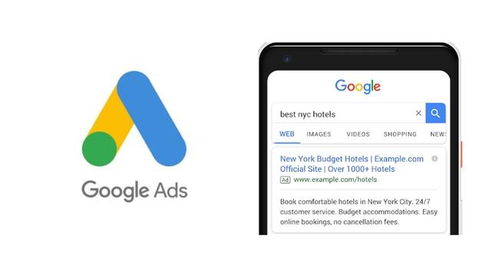Understanding Google Ads: A Comprehensive Guide

Google Ads, formerly known as Google AdWords, is a powerful online advertising platform that allows businesses to promote their products, services, or brands. By leveraging Google’s vast network, advertisers can reach a wide audience and drive targeted traffic to their websites. In this detailed guide, we’ll explore the various aspects of Google Ads, helping you understand how to make the most out of this platform.
Getting Started with Google Ads

Before diving into the intricacies of Google Ads, it’s essential to set up your account. Here’s a step-by-step guide to get you started:
- Visit the Google Ads website and click on “Start now.”
- Sign in with your Google account or create a new one.
- Choose your business type and industry.
- Set up your payment method and budget.
- Configure your campaign settings, including location, language, and bidding strategy.
Types of Google Ads Campaigns

Google Ads offers various campaign types to suit different advertising goals. Here are some of the most common ones:
- Search Campaigns: These appear at the top of Google’s search results when someone searches for relevant keywords.
- Display Campaigns: These are banner ads that appear on websites and apps within the Google Display Network.
- Video Campaigns: These ads are displayed on YouTube and other Google-owned video platforms.
- Shopping Campaigns: These showcase your products and appear in Google’s shopping section.
Setting Up Your Campaign
Once you’ve chosen your campaign type, it’s time to set up your campaign. Here are the key steps:
- Choose your campaign objective, such as increasing website traffic, generating leads, or boosting sales.
- Select your target audience based on demographics, interests, and locations.
- Define your budget and bidding strategy.
- Set up your ad groups and create your ads.
Optimizing Your Google Ads Campaign
Optimizing your Google Ads campaign is crucial for achieving success. Here are some tips to help you get started:
- Keyword Research: Identify relevant keywords that your target audience is searching for. Use tools like Google Keyword Planner to find long-tail keywords with high search volume and low competition.
- Ad Copy: Write compelling ad copy that highlights your unique selling proposition (USP) and encourages users to click on your ad.
- A/B Testing: Test different versions of your ads to determine which ones perform best.
- Monitoring and Adjusting: Regularly monitor your campaign’s performance and make adjustments as needed.
Measuring Success with Google Ads
Google Ads provides a range of tools and metrics to help you measure the success of your campaign. Here are some key metrics to track:
- Click-Through Rate (CTR): The percentage of people who clicked on your ad after seeing it.
- Conversion Rate: The percentage of people who completed a desired action, such as making a purchase or filling out a contact form.
- Cost Per Click (CPC): The average amount you pay each time someone clicks on your ad.
- Return on Ad Spend (ROAS): The revenue generated from your ads divided by the amount spent on advertising.
Google Ads vs. Google AdSense
While Google Ads is an advertising platform for advertisers, Google AdSense is a platform that allows website owners, bloggers, and content creators to earn money by displaying ads on their websites. Here’s a comparison of the two:
| Google Ads | Google AdSense |
|---|---|
| Advertisers use Google Ads to promote their products, services, or brands. | Website owners, bloggers |


